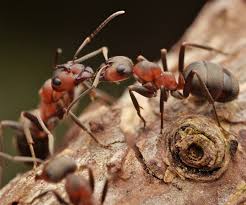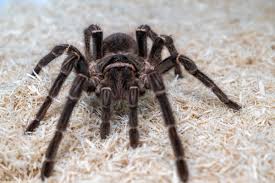GK
Unlocking the Power of Creativity: Tools, Tips, and Trends in the Digital World

Unlocking the Power of Creativity: Tools, Tips, and Trends in the Digital World
In today’s fast-paced digital age, creativity is more than just an artistic endeavor—it’s a vital skill for problem-solving, innovation, and self-expression. Whether you’re a designer, developer, teacher, writer, or gamer, creativity fuels everything from content creation to digital innovation. From tools like the Creative Cloud Cleaner Tool to immersive experiences like Minecraft Creative Mode and Fortnite Creative Maps, the modern creative journey is rich and expansive.
In this comprehensive guide, we’ll dive into essential tools like the Creative Cloud Desktop App, explore what creativity truly means, and discover resources like Creative Nonfiction, Creative Circle, and more—all while keeping SEO in mind and utilizing top search keywords.
What Is Creativity?
Let’s start at the beginning. What is creativity? At its core, creativity is the ability to produce something new, whether it’s an idea, a solution, or a piece of art. It’s not limited to the arts—scientists, educators, entrepreneurs, and gamers all rely on creativity to innovate and grow.
As creativity quotes often emphasize, creativity involves risk-taking, thinking differently, and seeing the world from a unique perspective. Some favorite quotes about creativity include:
“Creativity is intelligence having fun.” — Albert Einstein
“You can’t use up creativity. The more you use, the more you have.” — Maya Angelou
These creativity quotes remind us that creative thinking is endless and ever-evolving.
Adobe Creative Cloud: The Creative Professional’s Toolbox
If you’re serious about creative work, chances are you’ve used or at least heard of Adobe Creative Cloud. But what is Adobe Creative Cloud exactly?
It’s a suite of software applications for creatives, including Photoshop, Illustrator, Premiere Pro, and more. The Creative Cloud Desktop App is your hub for managing these tools. Whether you’re editing photos or designing a website, Adobe’s suite of tools offers unmatched flexibility.
Many users search for how to download Creative Cloud or access Creative Cloud All Apps to get the full experience. But what happens when you want to uninstall it?
How to Uninstall Adobe Creative Cloud
If you’re facing issues or just don’t need the apps anymore, you might want to know how to uninstall Adobe Creative Cloud. Here’s how:
First, open the Creative Cloud Desktop App.
Go to “Apps” > click the three dots next to the app > select “Uninstall.”
To completely remove the suite, use the Creative Cloud Uninstaller.
For more stubborn installations, use the Creative Cloud Cleaner Tool.
The Creative Cloud Cleaner Tool is essential for removing residual files or fixing corrupted installations. Many users who uninstall Creative Cloud rely on this utility for a clean break.
Still confused about the Creative Cloud Installer? This tool ensures smooth installation and updates for all Adobe apps.
Creative Resources Beyond Adobe
The digital world offers more than just Adobe. Consider Creative Fabrica for fonts, designs, and craft resources, or Creative Assembly, the team behind the legendary Total War games.
Another niche hub is Creative Circle, a staffing agency connecting creatives with freelance gigs, agencies, and full-time opportunities.
Meanwhile, Creative Memories is a favorite among scrapbookers, helping people preserve their lives’ best moments creatively. This physical-meets-digital creative space showcases the vast ways people express themselves.
For educational resources, Creative Teaching Press offers vibrant, engaging materials to make learning fun, while the Creative Curriculum supports educators with early learning programs.
Writing & Storytelling: Embracing Creative Nonfiction
Writers often grapple with how to write compelling, truthful stories. That’s where Creative Nonfiction comes in. This genre blends factual storytelling with literary techniques, making real stories read like novels.
Whether you’re working on a memoir or feature story, Creative Nonfiction lets you dig deep into truth while captivating readers.
For stuck writers, creative writing prompts can jump-start imagination. These tools can evolve into bestselling books, viral articles, or powerful speeches.
Gaming and Creativity
Gaming has become one of the most immersive creative fields today. Games like Minecraft Creative Mode and Fortnite Creative Maps give players the tools to build, explore, and share custom worlds.
In Minecraft Creative Mode, players have access to unlimited resources and can build without limits. Whether you’re into survival or storytelling, creative gameplay elevates the experience.
Looking for others to share your builds with? Minecraft Creative Servers host massive communities for collaboration and competition.
On the Fortnite side, Fortnite Creative and Fortnite Creative Codes let users develop unique maps, games, and experiences using Unreal Engine-inspired tools.
Even the gamemode creative command is essential in both Minecraft and Fortnite, opening doors to creative freedom.
Creative Culture: Events, Platforms, and More
Creativity isn’t a solo journey. It’s celebrated globally in communities like Creative Mornings, which hosts monthly breakfast talks featuring thinkers and makers.
Creative Loafing, a media outlet covering arts and culture, champions local creativity with interviews, guides, and editorials.
In the K-pop world, Blockberry Creative made waves with its approach to artist management, showing how creativity intersects with music, branding, and fan engagement.
For businesses, a creative brief template helps communicate vision and project goals efficiently—an essential part of any creative process.
Managing the Creative Process
Understanding the creative process can help unlock potential. This journey includes:
Preparation – Research and brainstorming
Incubation – Letting ideas simmer
Illumination – The “aha!” moment
Verification – Refining and editing
This isn’t just theory—it’s the foundation for design, writing, education, and even product development.
To generate ideas quickly, a creative title generator can be helpful, especially for marketers or bloggers seeking engaging headlines.
Cleaning Up and Reinstalling Creative Tools
Sometimes, your software slows you down. That’s when uninstalling or cleaning becomes essential.
To uninstall Creative Cloud, you can use the built-in app or the Creative Cloud Uninstaller.
For stubborn issues, the Creative Cloud Cleaner Tool is your go-to.
To reinstall, simply run the Creative Cloud Installer again and manage it through the Creative Cloud Desktop App.
If you’re switching systems or just tidying up, this process ensures a fresh creative start.
Humor, Insults, and The Lighter Side of Creativity
Creativity isn’t always serious. Creative insults, often humorous and clever, demonstrate linguistic creativity. For example:
“You have something on your chin… no, the third one down.”
“You bring everyone so much joy… when you leave the room.”
While not to be used cruelly, they show how words can be twisted for comedic effect—think Shakespeare meets modern roast.
Short creative quotes, funny lines, and puns add flavor to writing, content, and conversation.
Creative Economy and Capital
Creativity also drives business. Creative Capital, a nonprofit, funds innovative artists and projects. This shows how vital creativity is to cultural and economic development.
The Adobe Creative Suite and similar tools are essential assets in the creative economy, powering freelancers, agencies, and businesses worldwide.
Key Tools and Keywords Used
Let’s recap some of the key terms covered:
Creative Cloud Cleaner Tool, Creative Cloud Uninstaller, and Creative Cloud Installer for managing Adobe apps.
Uninstall Creative Cloud, Uninstall Adobe Creative Cloud, and How to Uninstall Adobe Creative Cloud for those exiting the Adobe ecosystem.
What is Adobe Creative Cloud, Creative Cloud Desktop App, and Creative Cloud All Apps for new and existing users.
Creative Insults, Creative Title Generator, Creative Writing Prompts, Quotes About Creativity, and Creativity Quotes for content creators.
Minecraft Creative Mode, Minecraft Creative Servers, Gamemode Creative, Fortnite Creative, Fortnite Creative Maps, and Fortnite Creative Codes for gamers.
Creative Circle, Creative Fabrica, Creative Memories, Creative Curriculum, Creative Teaching Press, Creative Loafing, and Creative Mornings for diverse creators.
Creative Assembly, Creative Process, Creative Nonfiction, Creative Co Op, and Creative Brief Template for professionals and educators.
Adobe Creative Suite, Download Creative Cloud, and Creative Capital for creatives and enterprises.
These keywords are optimized for visibility, relevance, and engagement.
Conclusion: Embrace Creativity, Elevate Your Life
From managing Adobe tools with the Creative Cloud Cleaner Tool to building dreamscapes in Minecraft Creative Mode, the power of creativity is everywhere. Whether you’re learning how to uninstall Creative Cloud or searching for quotes about creativity, you’re participating in a global movement of innovation.
Remember, creativity isn’t reserved for artists—it belongs to anyone willing to think differently.
Download Creative Cloud or explore Creative Fabrica. Get inspired by Creative Nonfiction or express yourself with a creative insult. Attend a Creative Mornings event or share your world on Minecraft Creative Servers.
Whatever your journey, let creativity lead the way.
Related: Used: digital creativity, art tools, online design platforms

GK
How Do Satellites Stay in Orbit? A Complete Guide

How Do Satellites Stay in Orbit? A Complete Guide
When we look up at the night sky, we often wonder, how do satellites stay in orbit? These human-made marvels play a crucial role in communication, weather forecasting, navigation, and scientific research. But the science behind their motion often sparks curiosity. In this blog, we will explore how do satellites stay in orbit, how do satellites move, how do satellites work, and how do satellites orbit the Earth in a simple, easy-to-understand way.
The Basics: How Do Satellites Stay in Orbit?
To answer the big question—how do satellites stay in orbit—we need to understand gravity and velocity. A satellite is launched into space with enough speed to counteract the pull of Earth’s gravity. If it moves too slowly, it will fall back to Earth. If it moves too quickly, it will escape Earth’s gravity. The perfect balance between speed and gravity is what allows satellites to remain in orbit.
This balance is why the question of how do satellites stay in orbit fascinates scientists and space enthusiasts alike. Simply put, satellites are constantly “falling” toward Earth due to gravity, but because they are moving sideways so quickly, they keep missing Earth, creating a continuous orbit.
How Do Satellites Move in Space?
Now that we understand how do satellites stay in orbit, another question arises: how do satellites move?
Satellites move in space because of the momentum given to them during launch. Once in orbit, they don’t need engines running continuously to keep moving. Instead, they rely on the laws of physics—specifically Newton’s First Law of Motion, which states that an object in motion stays in motion unless acted upon by an external force.
So, how do satellites move? They circle Earth at extremely high speeds—often thousands of kilometers per hour. This movement ensures that they maintain their orbit while serving their purposes, such as GPS navigation, weather monitoring, or internet connectivity.
How Do Satellites Work?
Understanding how do satellites work helps us appreciate their role in daily life.
Satellites are equipped with communication systems, sensors, solar panels, and antennas. Depending on their type, they collect data, send signals, or relay communication. For example, weather satellites take pictures of cloud formations, while GPS satellites send signals that help your phone calculate your location.
So, how do satellites work in practice? They receive signals from Earth, process them, and send them back, sometimes bouncing information between multiple satellites to ensure coverage across the globe. Without satellites, modern life—from weather reports to smartphone maps—would look very different.
How Do Satellites Orbit the Earth?
Another important concept is how do satellites orbit the Earth. When a satellite is launched, it’s placed into a specific orbit depending on its mission.
So, how do satellites orbit the Earth effectively? They follow paths determined by their speed, altitude, and Earth’s gravitational pull. Low Earth orbit (LEO) satellites, for example, orbit closer to Earth and are used for imaging and communication. Geostationary satellites orbit much farther away, appearing “fixed” over one point of Earth, which makes them perfect for weather and television broadcasting.
Understanding how do satellites orbit the Earth reveals the planning and precision behind every satellite launch. Engineers calculate exact speeds and angles to ensure satellites serve their purpose without drifting off course.
Everyday Examples of Satellites in Action
Communication satellites: Deliver TV, radio, and internet services.
Weather satellites: Help meteorologists forecast storms and track climate patterns.
GPS satellites: Guide airplanes, ships, cars, and smartphones.
Scientific satellites: Observe Earth, study space, and provide crucial research data.
In all these cases, the core principles of how do satellites stay in orbit, how do satellites move, how do satellites work, and how do satellites orbit the Earth are at play.
Why Understanding Satellites Matters
Knowing how do satellites stay in orbit isn’t just for space scientists—it also helps us appreciate the technology we use every day. Whether you’re checking weather updates, navigating with GPS, or streaming a live event, satellites are silently working above us.
Understanding how do satellites move gives insight into their reliability. Recognizing how do satellites work highlights their contribution to global communication. And exploring how do satellites orbit the Earth shows how human innovation has harnessed natural forces to achieve incredible technological feats.
Final Thoughts
So, how do satellites stay in orbit? They balance the pull of Earth’s gravity with their speed, creating a stable path around our planet.
How do satellites move? By maintaining momentum once launched into space.
How do satellites work? Through advanced systems that collect and transmit signals and data.
And finally, how do satellites orbit the Earth? By following carefully calculated paths that match their mission requirements.
Satellites are not just objects floating in the sky—they are the backbone of our modern, connected world.

GK
Why Do Ants Communicate? Secrets of Their Tiny World

Why Do Ants Communicate? Secrets of Their Tiny World
When you see a line of ants moving in perfect coordination, you might wonder: Why do ants communicate so effectively compared to other insects? Ants are social creatures that thrive in colonies, and their survival depends on constant communication. Understanding why do ants communicate opens up fascinating insights into nature’s most cooperative societies.
Why Do Ants Communicate?
Ants live in large colonies where cooperation is key. From finding food to protecting their queen, ants rely on teamwork. So, why do ants communicate so much? The answer is simple: they need to share vital information. Without communication, their organized system would collapse.
But why do ants talk to each other in ways humans can’t easily see? They use chemical signals, body language, and even touch. These methods help ants build trails, warn others about danger, and decide who does what job in the colony.
What Do Ants Communicate With Each Other?
One major question scientists ask is: what do ants communicate with each other? Ants mainly communicate through pheromones—special chemicals they release into the air or onto the ground. For example, when a worker ant finds food, it leaves a scent trail so others can follow.
Another answer to what do ants communicate with each other includes danger signals. If predators threaten the colony, ants release alarm pheromones, and instantly, the army of ants prepares to defend their home.
So, why do ants communicate? Because sharing food sources, defense strategies, and even instructions about colony building is essential to their survival.
Why Do Ants Talk to Each Other?
If you’ve ever watched ants closely, you might think: why do ants talk to each other when they can simply work on their own? The truth is, no single ant could survive long without help. Ant colonies are like super-organisms, and each ant is just one small part of the larger system.
Scientists discovered that ants talk to each other not only with chemicals but also by tapping their antennae. This is how they pass on messages about food, danger, or even grooming needs.
So, why do ants talk to each other so often? Because it keeps the colony strong, united, and efficient.
What Do Ants Talk About?
Have you ever wondered: what do ants talk about during their busy lives? While ants don’t talk the way humans do, their signals carry important “conversations.” For example, what do ants talk about includes:
Food locations
Predators or threats
Which direction to travel
Nest maintenance
Caring for larvae and the queen
So, if you ask, what do ants talk about, the answer is survival and teamwork. Every message strengthens the colony’s unity.
What Do Ants Use to Communicate?
Now let’s answer another vital question: what do ants use to communicate? The main tools are:
Pheromones – chemical signals to mark paths and warn of threats.
Antennae tapping – a form of “touch language.”
Vibrations – some ants can produce sound by rubbing body parts, known as stridulation.
Therefore, what do ants use to communicate is not sound or words like humans, but advanced biological methods designed for efficiency.
By learning what do ants use to communicate, we realize why these tiny insects can achieve such large-scale cooperation.
Ants Talk to Each Other Constantly
It’s fascinating how often ants talk to each other while working. Every ant has a job, and constant interaction keeps the whole colony in sync. Imagine if thousands of ants worked silently, without signals—it would be chaos.
Because ants talk to each other using multiple strategies, they can adapt quickly to challenges like floods, food shortages, or predator attacks. This makes their survival strategy nearly flawless.
So, the reason ants talk to each other is clear: communication equals survival.
Conclusion: Why Do Ants Communicate?
In summary, why do ants communicate is one of nature’s most interesting mysteries. These tiny creatures communicate to share food sources, defend their colony, and ensure every ant knows its role. By studying what do ants communicate with each other, why do ants talk to each other, what do ants talk about, and what do ants use to communicate, we learn how powerful teamwork can be.
Ant colonies remind us that even the smallest beings rely on unity and connection. Just as ants talk to each other to thrive, humans also depend on communication for survival and growth.

GK
How Do Spiders Spin Webs? A Fascinating Look Into Nature’s Architects

How Do Spiders Spin Webs? A Fascinating Look Into Nature’s Architects
Spiders are among the most fascinating creatures in the animal kingdom. Their ability to create intricate and strong webs has amazed humans for centuries. One of the most common questions people ask is, “How do spiders spin webs?” Understanding this natural engineering marvel not only satisfies curiosity but also highlights the wonders of biology and evolution. In this article, we’ll explore in detail how do spiders spin webs, how do spiders spin silk, and how they manage to build webs across trees, gaps, and open spaces. We’ll also include how do spiders make webs step by step so that both adults and kids can easily understand this process.
Introduction: Why Webs Matter
Spiders belong to the class Arachnida, and most of them use webs for survival. Webs are not just beautiful patterns; they serve multiple purposes such as:
Capturing prey
Providing shelter
Protecting eggs
Helping in movement across open spaces
Before diving deeper into how do spiders spin webs, it’s important to understand that the secret lies in their silk glands, located in the abdomen.
How Do Spiders Spin Webs?
When people wonder, “How do spiders spin webs?”, the answer lies in silk production. Spiders have specialized organs called spinnerets at the back of their abdomen. These spinnerets release silk proteins that harden upon contact with air, creating the threads that form a web.
The process of how do spiders spin webs is guided by instinct. Without any formal training, spiders know exactly how to create geometrically perfect webs. Scientists believe this is due to millions of years of evolution, allowing spiders to perfect this skill for survival.
How Do Spiders Spin Silk?
Another common curiosity is, “How do spiders spin silk?” Silk is produced in liquid form inside the spider’s silk glands. As it passes through the spinnerets, the liquid silk transforms into a solid thread.
Spiders can spin different types of silk for different purposes:
Sticky silk – used for capturing prey.
Non-sticky silk – used for structural support.
Silk for egg sacs – protective silk to safeguard offspring.
Understanding how do spiders spin silk is crucial because silk is not just strong but also flexible. In fact, spider silk is stronger than steel of the same thickness.
How Do Spiders Spin Webs Step by Step?
To better understand how do spiders make webs step by step, let’s break it down:
Anchor Line Creation – The spider releases silk into the air. When the silk catches onto a surface, it forms the first anchor.
Bridge Line Formation – To explain how do spiders spin webs across large gaps, the spider creates a bridge line by letting the wind carry the silk to another surface.
Frame Building – The spider strengthens the outline of the web by adding more silk around the anchor points.
Radial Lines – The spider moves from the center outward, forming straight radial lines like bicycle spokes.
Spiral Construction – Finally, the spider builds a spiral from the inside out, creating a sticky pattern to trap insects.
This systematic approach shows exactly how do spiders make webs step by step without any trial and error.
How Do Spiders Spin Webs Across Large Gaps?
One of the most amazing feats is how do spiders spin webs across large gaps. Spiders rely on the wind to carry a thin strand of silk across the gap. When the strand sticks to another surface, the spider carefully walks across and strengthens it.
This natural engineering marvel explains how do spiders spin webs across open spaces as well. Even when no close surfaces exist, spiders can release silk threads into the wind, allowing them to form bridges that become the foundation of their webs.
How Do Spiders Spin Webs for Kids?
Explaining how do spiders spin webs for kids can be both educational and fun. Kids love to watch spiders in action, and breaking it down simply helps them appreciate nature.
For example, you can say:
Spiders have silk inside their bodies.
They use their back legs to pull out the silk like a thread.
First, they make a straight line (like a rope).
Then, they make a circle and decorate it with sticky silk to catch bugs.
Making this explanation simple is the best way to answer how do spiders spin webs for kids while sparking their interest in science.
How Do Spiders Make Webs?
People often ask, “How do spiders make webs?” The short answer is: spiders use silk from their spinnerets to build strong and organized structures that help them survive.
When exploring how do spiders make webs, it’s important to note that not all spiders make the same kind of web. Some create orb webs, while others make funnel webs, sheet webs, or even trapdoor webs.
How Do Spiders Make Webs Between Trees?
One of the most fascinating abilities is how do spiders make webs between trees. Just like with gaps, spiders let silk float through the air until it attaches to a branch of another tree. Once it does, they cross over and strengthen the silk, repeating the process until a full web is formed.
This natural method is why we often see large webs stretching between tree branches in gardens and forests. Understanding how do spiders make webs between trees gives us insight into how these creatures survive even in wide, open natural environments.
The Science Behind Web Strength
To truly appreciate how do spiders spin webs, one must also understand the incredible strength of spider silk. Research shows that spider silk is five times stronger than steel of the same thickness, yet it is incredibly lightweight.
This is why scientists study how do spiders spin silk to inspire innovations in materials science, including medical sutures, protective clothing, and even aerospace technology.
Why Are Spider Webs So Precise?
Many people wonder how such a small creature can make such geometrically perfect webs. The answer lies in instinct and evolutionary programming. Spiders don’t learn how do spiders make webs step by step from their parents—they are born with the ability coded in their DNA.
This explains why spiders in different parts of the world create similar types of webs without any training.
Fun Facts for Kids About Spider Webs
To make learning about how do spiders spin webs for kids engaging, here are some fun facts:
A spider can rebuild a damaged web in just one night.
Some spiders eat their own webs to recycle the silk.
Webs can be invisible to humans but easily felt by insects.
Not all spiders make webs—some hunt without them.
Conclusion
Spiders are nature’s skilled engineers, and their webs are masterpieces of survival. By understanding how do spiders spin webs, how do spiders spin silk, and how do spiders make webs step by step, we get a glimpse into one of the most fascinating behaviors in the animal kingdom.
Whether it’s how do spiders spin webs across large gaps, how do spiders spin webs across open spaces, or how do spiders make webs between trees, these tiny creatures showcase extraordinary problem-solving skills.
So the next time you see a spider web glistening with morning dew, take a moment to appreciate not just its beauty, but the incredible biological process behind it.

-

 Business2 months ago
Business2 months ago☕️The Ultimate Coffee Lover’s Guide: From Caffeine in a Cup of Coffee to Turkish Coffee Delights
-

 Business2 months ago
Business2 months agoThe Many Faces of “Future”: Markets, Farming, Music, AI, and a Better Tomorrow
-

 Health2 months ago
Health2 months agoA Journey Through Life’s Firsts: Health, Gaming, and Experiences That Shape Us
-

 Business2 months ago
Business2 months agoIn today’s fast‑moving economy, what industry is slowly dying and why?
-

 Lifestyle2 months ago
Lifestyle2 months agoWhat is life Philosophy?
-

 Tech1 month ago
Tech1 month agoUltimate Secret Android Apps You’ll Actually Love
-

 Business2 months ago
Business2 months agoRussia’s Energy Ministry Launches Crypto Mining Register
-

 Lifestyle2 months ago
Lifestyle2 months ago🐦 The Ultimate Bird Watching Guide: Best Birdwatching Locations & Tips for Beginners



